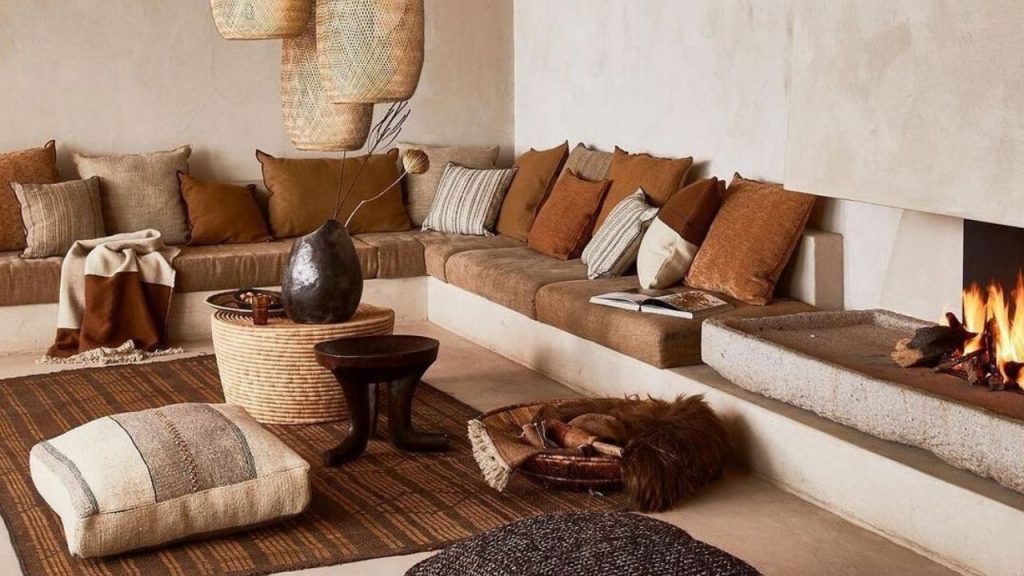The ‘Japandi’ interior style has been steadily climbing the ranks in interior design since COVID-19 swept our shores in 2020, along with similar trends embracing the natural side of living. Take ‘biophilic interiors’ for example, which saw designers and enthusiasts looking for aesthetic ways to integrate nature into their living spaces.
Japandi – a fusion of Zen Japanese and Scandinavian interiors, took a similar twist on the biophilic trend, with a broader focus on creating a calming, serene space which boasts light and airiness. Japandi interiors borrow from the best of both Japanese and Scandinavian styles.
Before we can get into what Japandi really is, we need to understand the significance of both styles.
Japanese Zen interiors
Japanese Zen interiors make use of simple forms and low-to-the-ground furniture. Natural materials such as wood are a staple, and the use of earthy tones conjures a sense of calm and peace. Think minimalism that inches toward nature with imperfect forms that flow.
In Japan, there’s a term for the act of embracing imperfection, and it’s called wabi sabi. The term itself has a deep history of cultural significance, but when it comes to interior, we’re looking at embracing all kinds of natural, imperfect objects. Just like a river has its bends and curves, handcrafted Japanese items often boast the same trait with unique marks and distinctions that set them apart from the rest. Nothing natural flows in straight lines.
It’s all about quality, vs quantity. A real object worth treasuring is made by hand, with care. Its marks and imperfections are what makes it unique, and gives it life. When we’re creating a Japanese Zen space, we want to embrace the lumpy misshapen flowerpots. Instead of throwing the cracked ceramic bowl away, give it new life by mending it. Honour the cracks; they add character.
Scandinavian interiors
Like Japanese Zen, these interiors often boast simple, clean furniture and form. Scandinavian style uses lighter colours, like white, beige and neutrals.
Both Japanese and Scandinavian interiors share a penchant for natural objects with neutral tones, like wood, rattan, cotton and linen.
And just like wabi sabi, Swedish culture also has a tradition which stretches far back into its routes, called hygge. In short, the concept is about embracing comfort. When it comes to interior design, we’re honing in on the look and feel of comfort. Clean, neutral colours keep the space feeling grounded, whilst natural objects like woven baskets and rattan drawers conjure up a sense of homeliness. Think of a simple cottage by the countryside.
Japandi
Japandi embraces the best of both interior worlds. With the clean, cozy feel of a Scandinavian interior and the calm, earthy feel of a Japanese Zen space that embracing its imperfections, we achieve the ‘sweet spot’ where comfort, nature and minimalism meet. How do we get there? We’ve got a few tricks up our sleeve.
Keep it simple
Stick to simple forms and basic shapes in your space. Creating a Zen space is all about minimalism, so clean out the clutter!
Wood and neutrals
Contrasting lighter woods, like light oak floors, with darker earthy tones is a great way to achieve a Japandi look, just don’t go too dark! Layer in objects with a neutral pallet once you’ve decided on your contrasting colours. Keep everything clean and calm. Think woods and whites, and make us of what comes between.
It’s nature baby
Opt for natural materials where you can. Woven baskets, rattan drawers, wooden floors, white/neutral cottons and linens.
Embrace wabi sabi
Love your imperfections. Your space is an extension of yourself. Be accepting of its imperfections, and find ways of embracing them, or bringing them forward. A split across a wooden shelf, or a ceramic object which has been broken and mended achieves this feel.
ALSO SEE: 5 decor tips for micro-living
Written by Savanna Douglas for Woman&Home.
Feature Image: Instagram / @japandi_design

